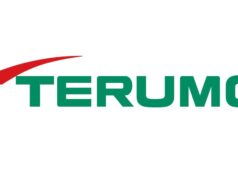Terumo Europe recently shared that a positive guidance has been published by the National Institute for Health and Care Excellence (NICE) stating that selective internal radiation therapy (SIRT) is now recommended to be used for the treatment of neuroendocrine tumors with liver metastasis (NELM).
According to a Terumo press release, this is a key milestone as it expands the existing treatment options (surgery, percutaneous ablation, systemic therapies, peptide receptor radionuclide therapy [PRRT] and other intra-arterial therapies) for the treatment of patients with NELM.
The NICE guidance describes SIRT as a tool to reduce tumour size within the liver, slow local tumour growth or control a collection of symptoms caused by some neuroendocrine tumours that release hormones. SIRT can be preceded or followed by other treatments such as PRRT and it can be repeated over time. The committee stated that SIRT is likely to be better tolerated than other intra-arterial therapies, because SIRT relies on radiation rather than an embolic effect to kill the tumour cells.
This guidance is part of NICE’s interventional procedure programme, which considers whether interventional procedures (e.g. SIRT) are safe and work well enough for wider use in the National Health Service (NHS). A comprehensive review of the literature and consultations with clinical experts and patient representatives informed the decision of the committee.
This is a positive endorsement for the safety and efficacy of SIRT and a complement to the 2020 European Society for Medical Oncology (ESMO) guidelines for gastroenteropancreatic neuroendocrine neoplasms in which locoregional therapies (including SIRT) have been recommended for tumour shrinkage and for symptoms control in patients with NELM suffering from carcinoid syndrome (flushing and/or diarrhoea). The European Neuroendocrine Tumor Society (ENETS) guidance (2022) also mentions that SIRT can be considered as a therapeutic option for patients with NELM with carcinoid syndrome.
The positive impact on the quality of life of the NELM patient has been described in the NICE report. It was reported from a patient that nearly two months after the treatment, tiredness subsided and he began to enjoy normal activities and hobbies again, slowly returning to his old self.
Terumo notes that QuiremScout (Holmium-166 microspheres) and QuiremSpheres (Holmium-166 microspheres) as components of the Holmium Platform can be used for an individualised treatment approach (work-up and therapy) of patients with NELM.
Publications by Braat et al (2020) and Ebbers et al (2022) concerning the HEPAR PLuS study concluded that QuiremSpheres microspheres are effective with an acceptable safety profile after initial peptide receptor radionuclide therapy (PRRT) for patients with bulky NELM.
Another recent publication by RamdHani et al (2024) demonstrated a clear dose-response relationship in patients with NELM treated by QuiremSpheres. More specifically, achieving a tumor dose ≥120Gy provides the highest likelihood (90%) for obtaining a response based on a retrospective analysis of QuiremSpheres use in real-world practice.
Nabil Kibriya (King’s College Hospital, London, UK) remarked on the guidance: “SIRT provides a minimally invasive treatment option for patients with metastatic neuroendocrine tumors (mNETs) of the liver, offering precise targeting of tumour cells while sparing healthy tissue. This approach has demonstrated significant tumour response rates and prolonged progression-free survival, leading to improved outcomes and quality of life for individuals with mNETs. Additionally, SIRT can be combined with other therapies, enhancing its effectiveness in managing advanced diseases and providing hope for patients facing this challenging condition. This specific NICE guidance can help us to receive UK reimbursement soon and therefore get wider access of this treatment modality for our patients.”
The NICE guidance is accessible here.









